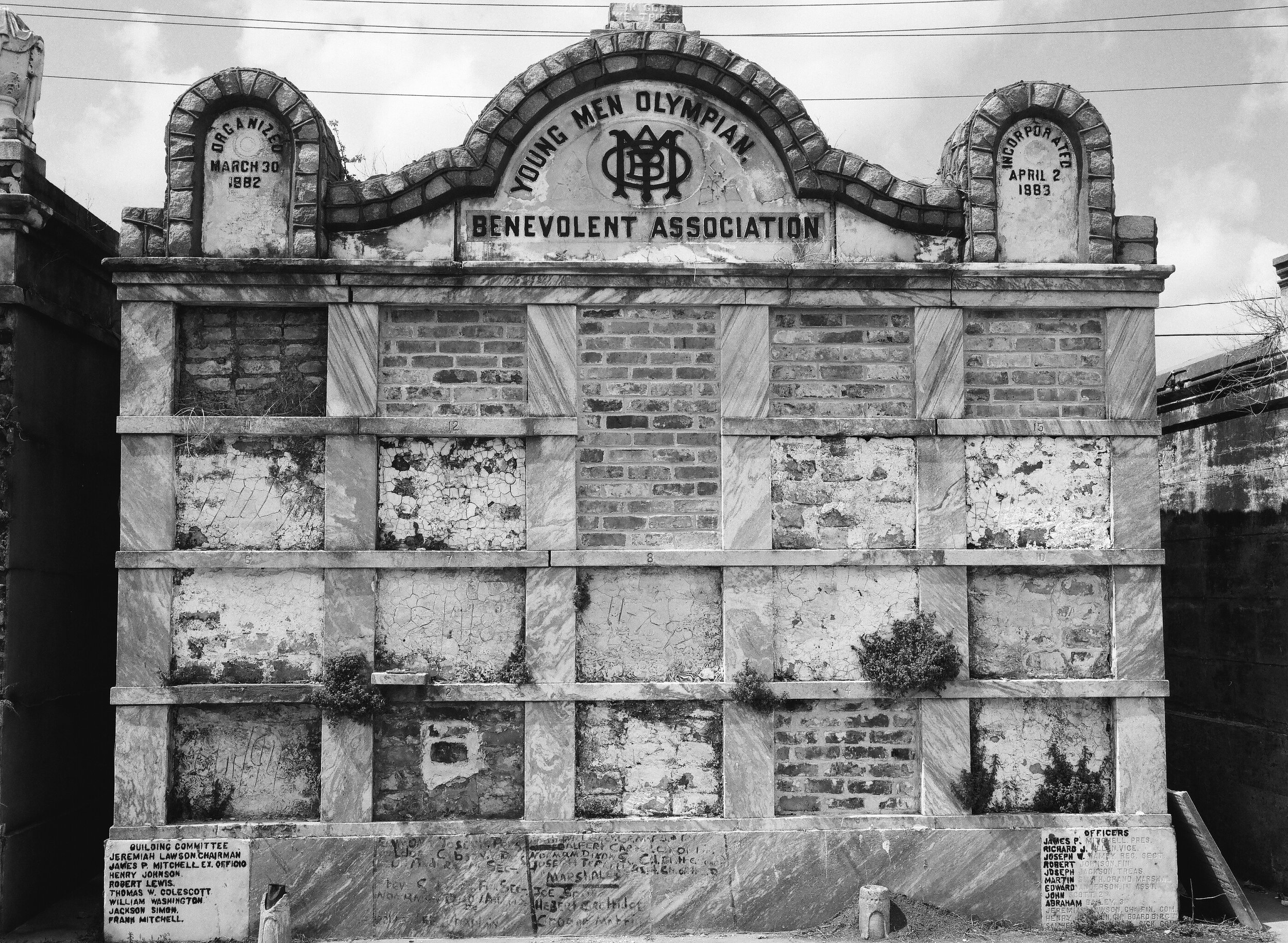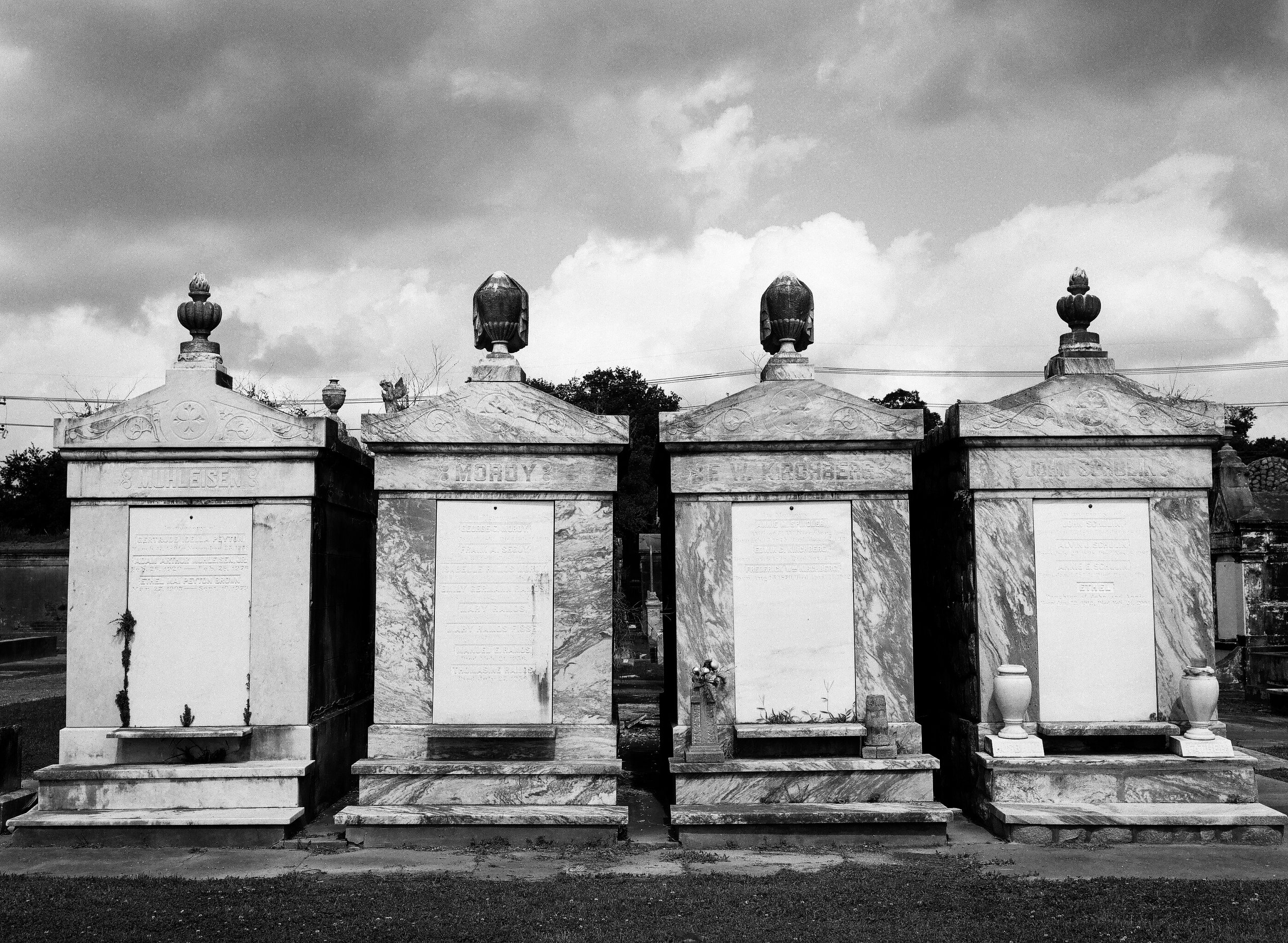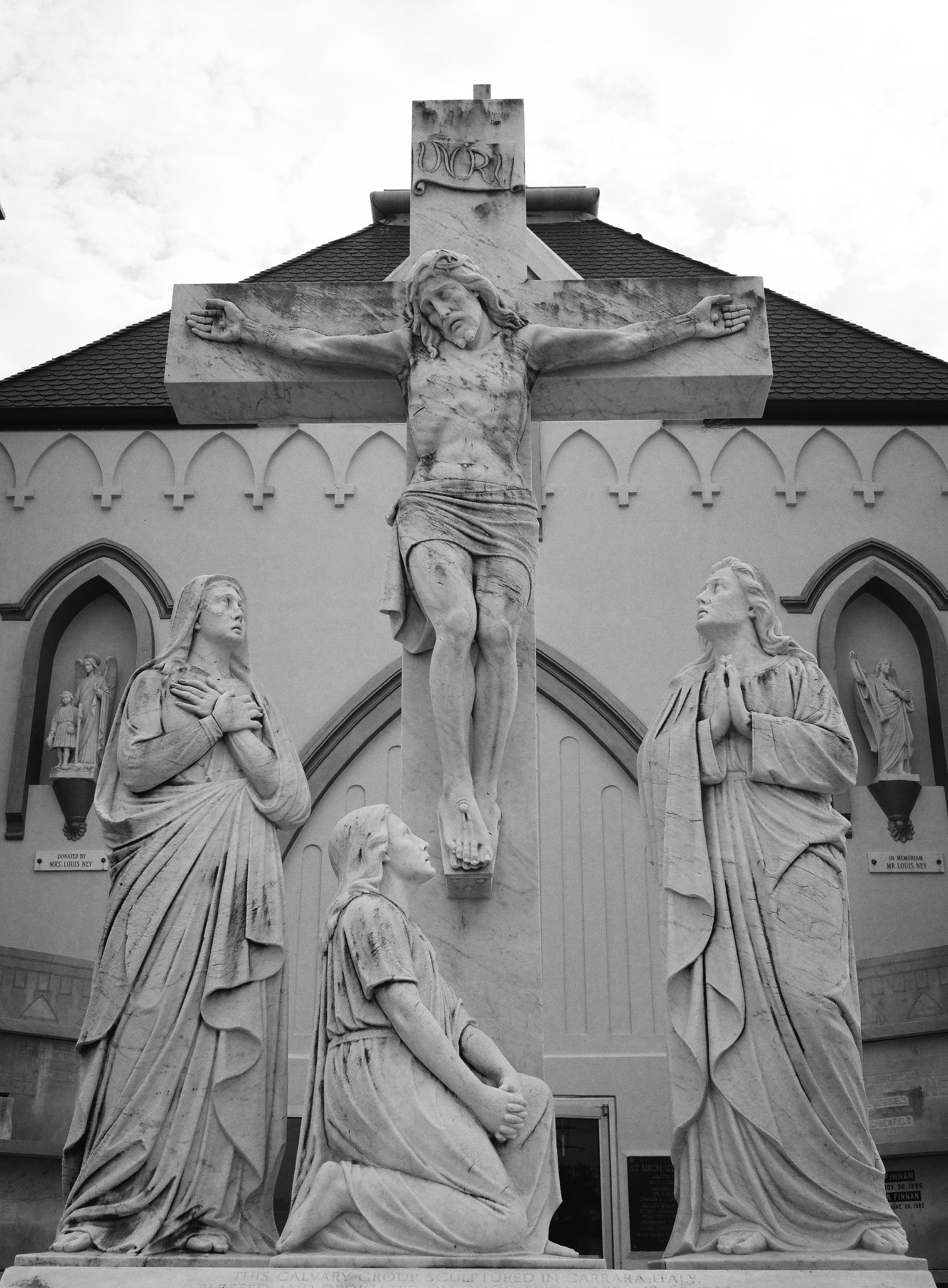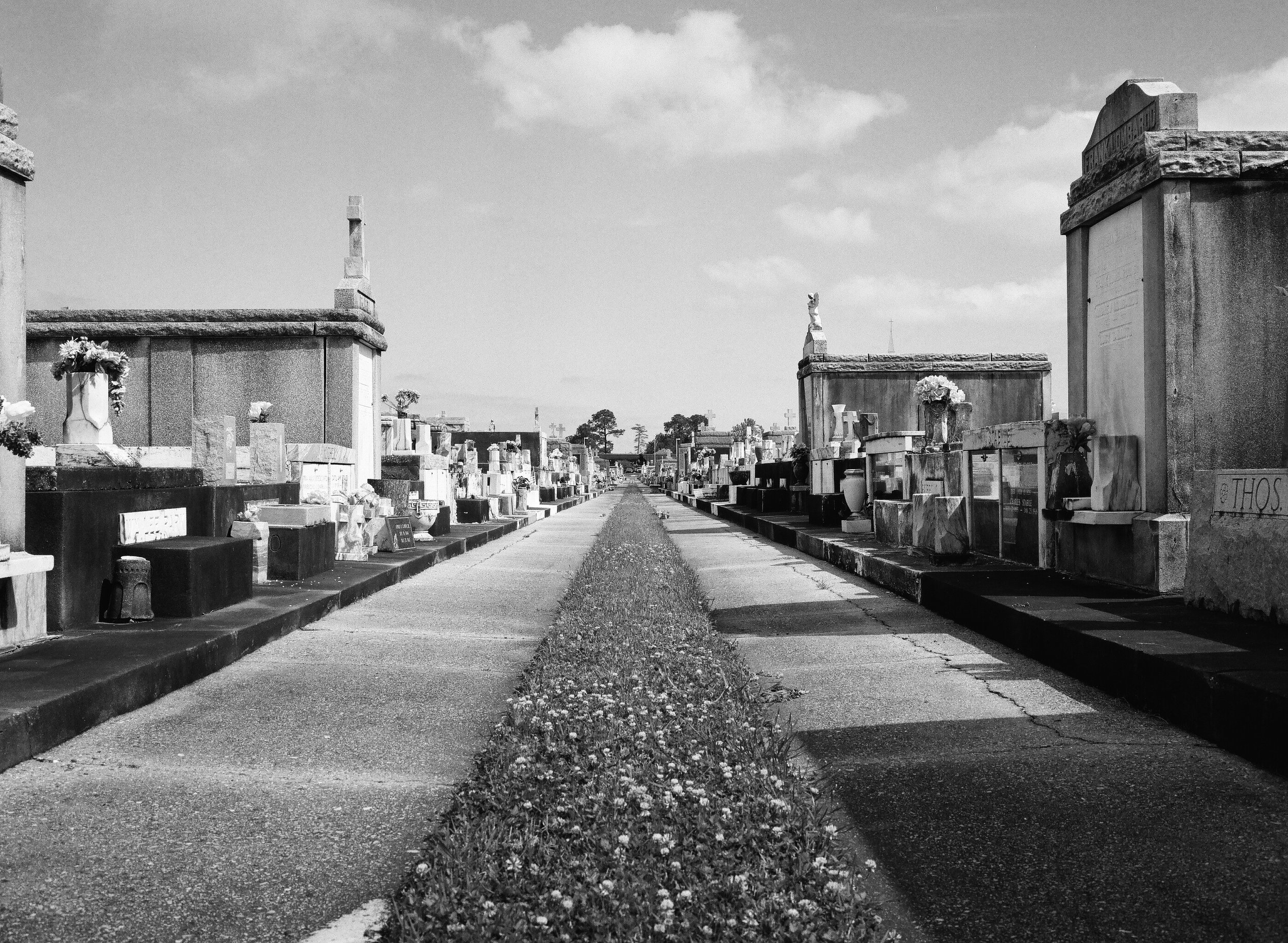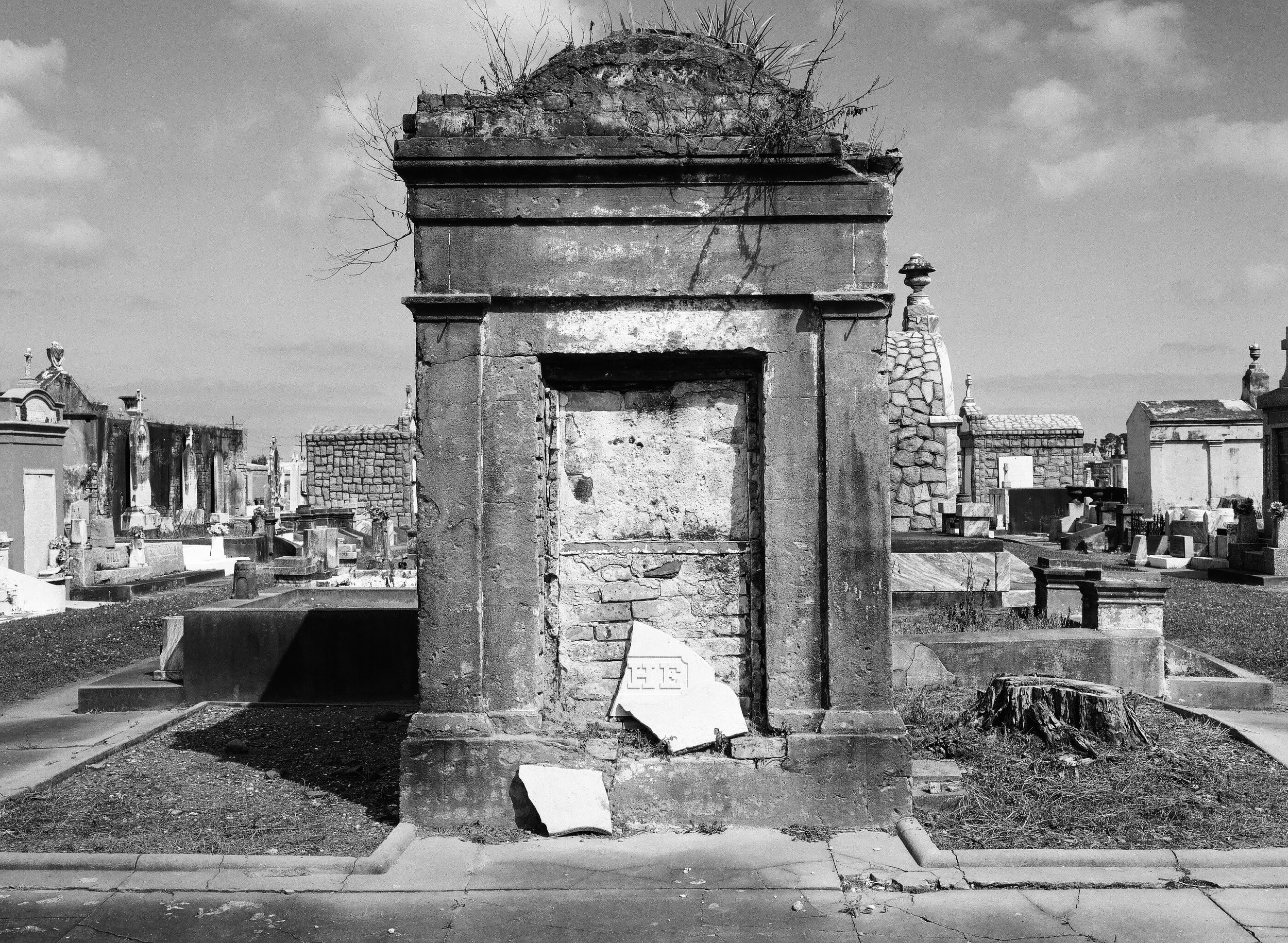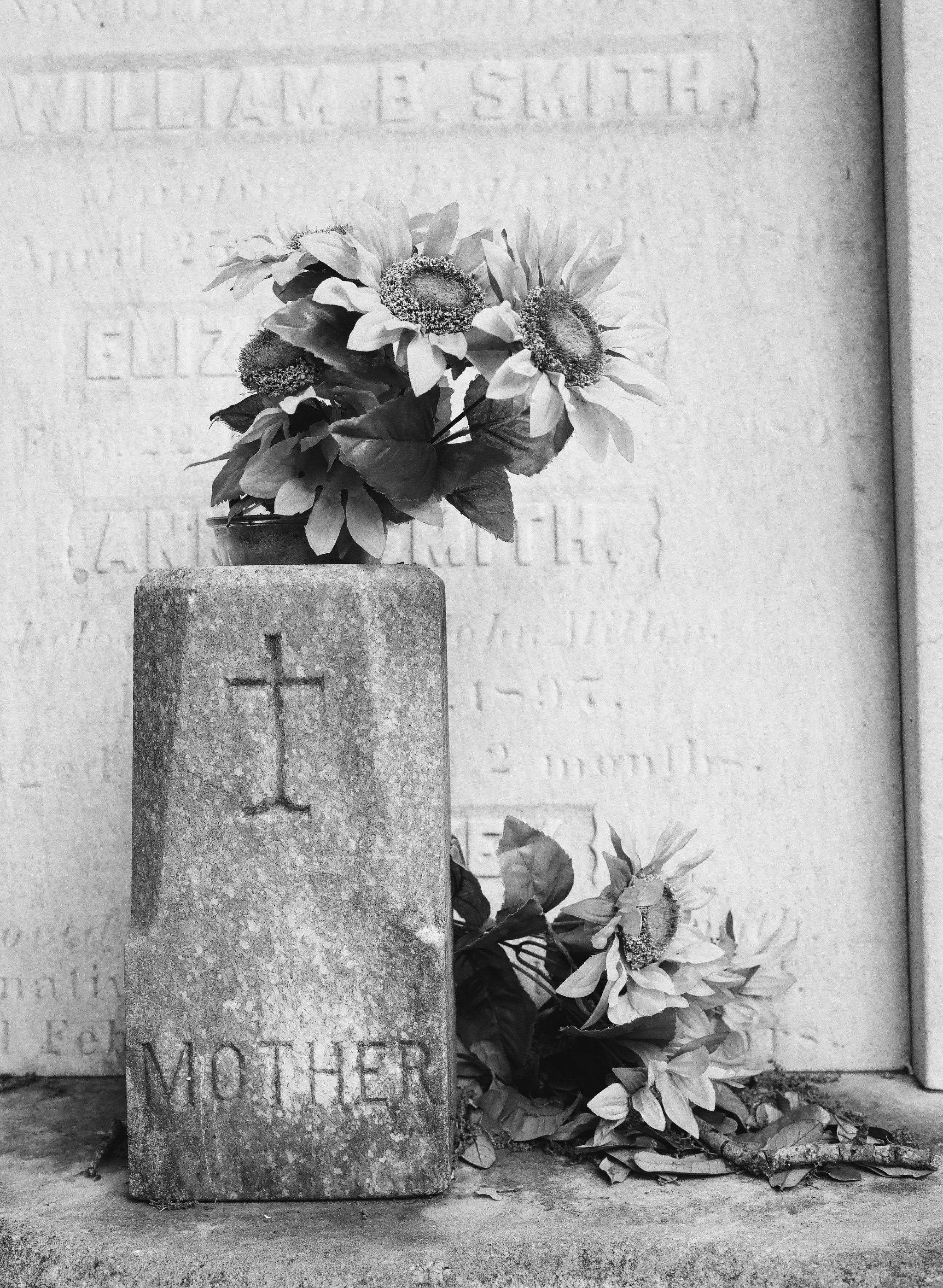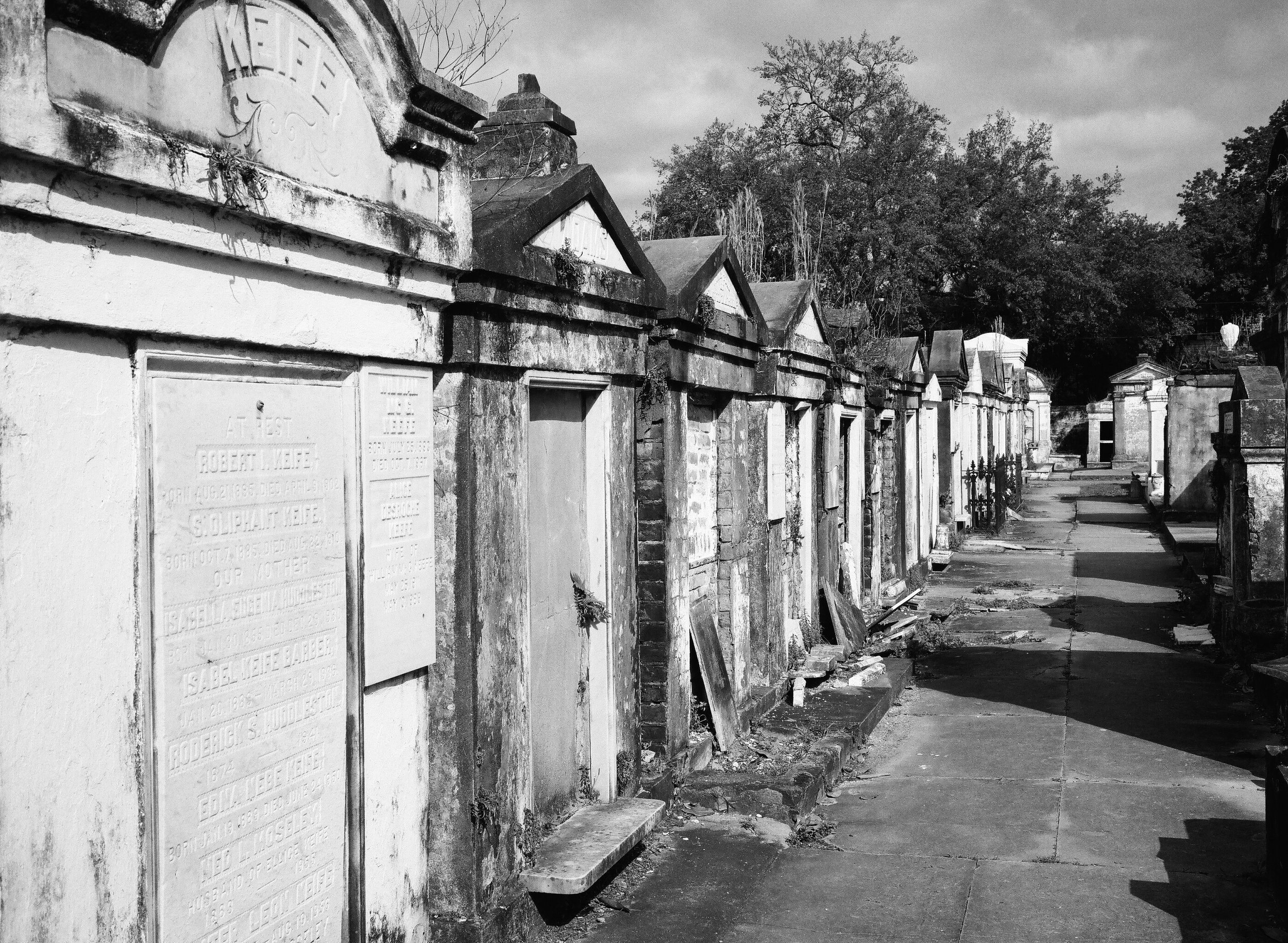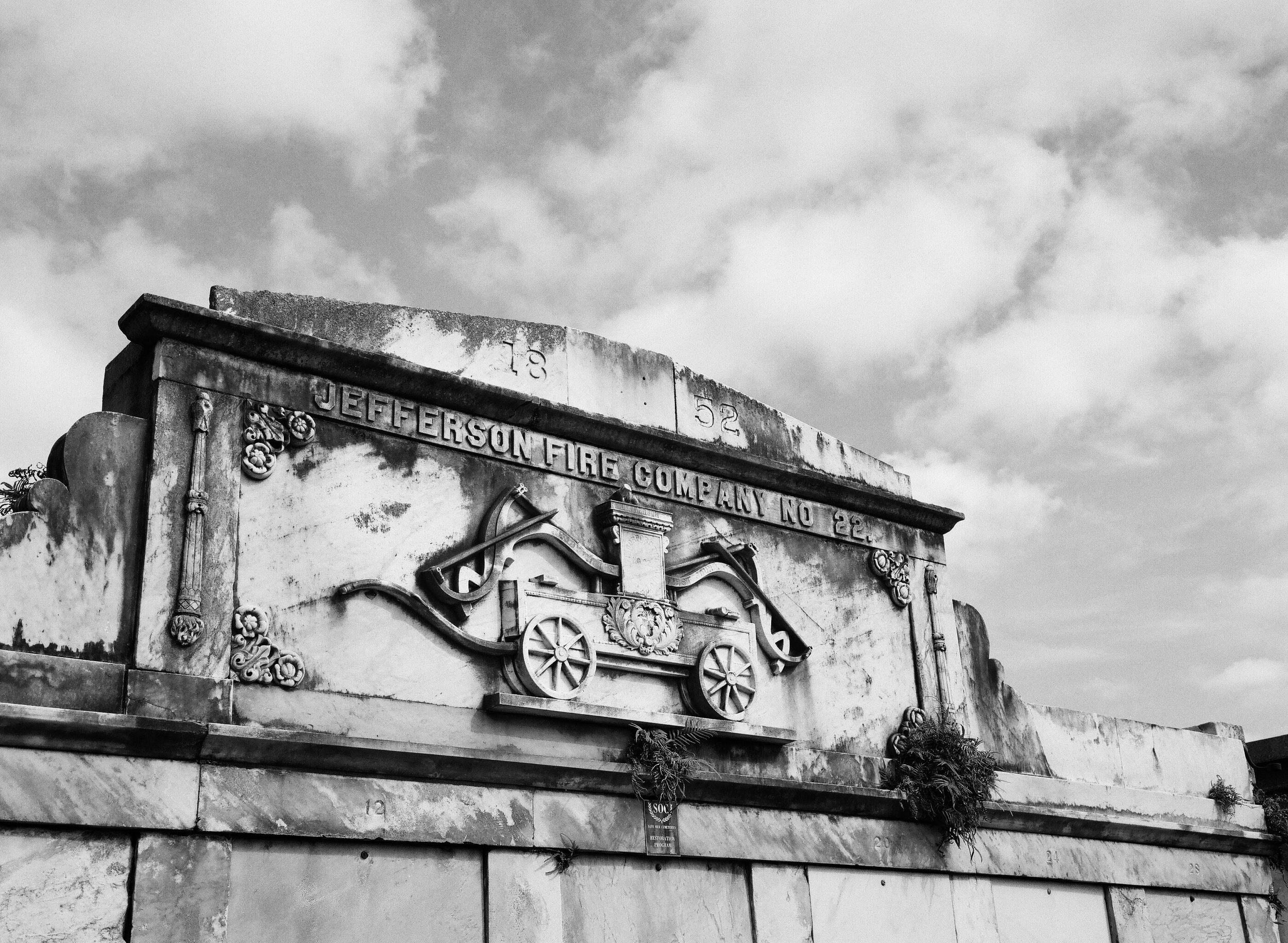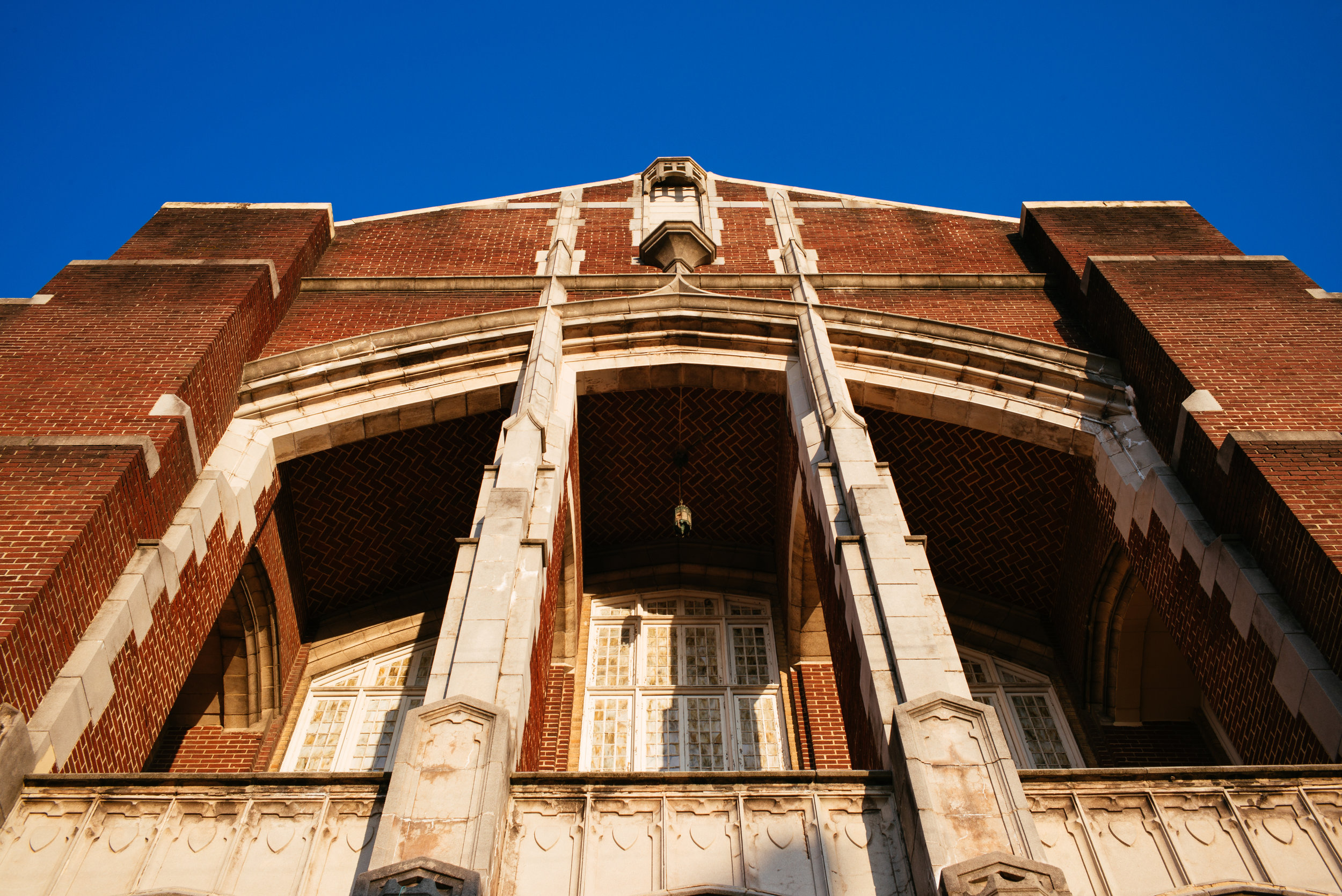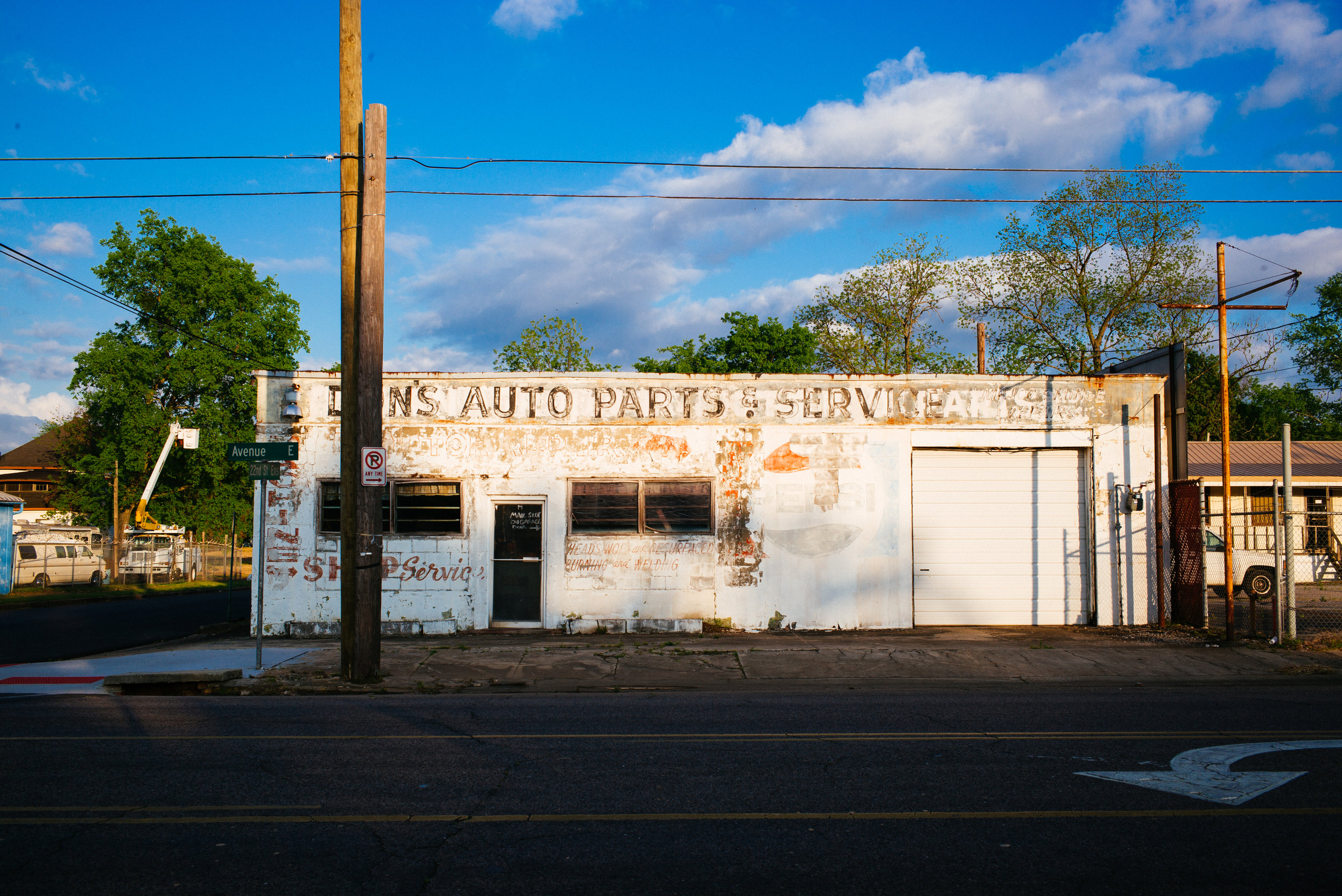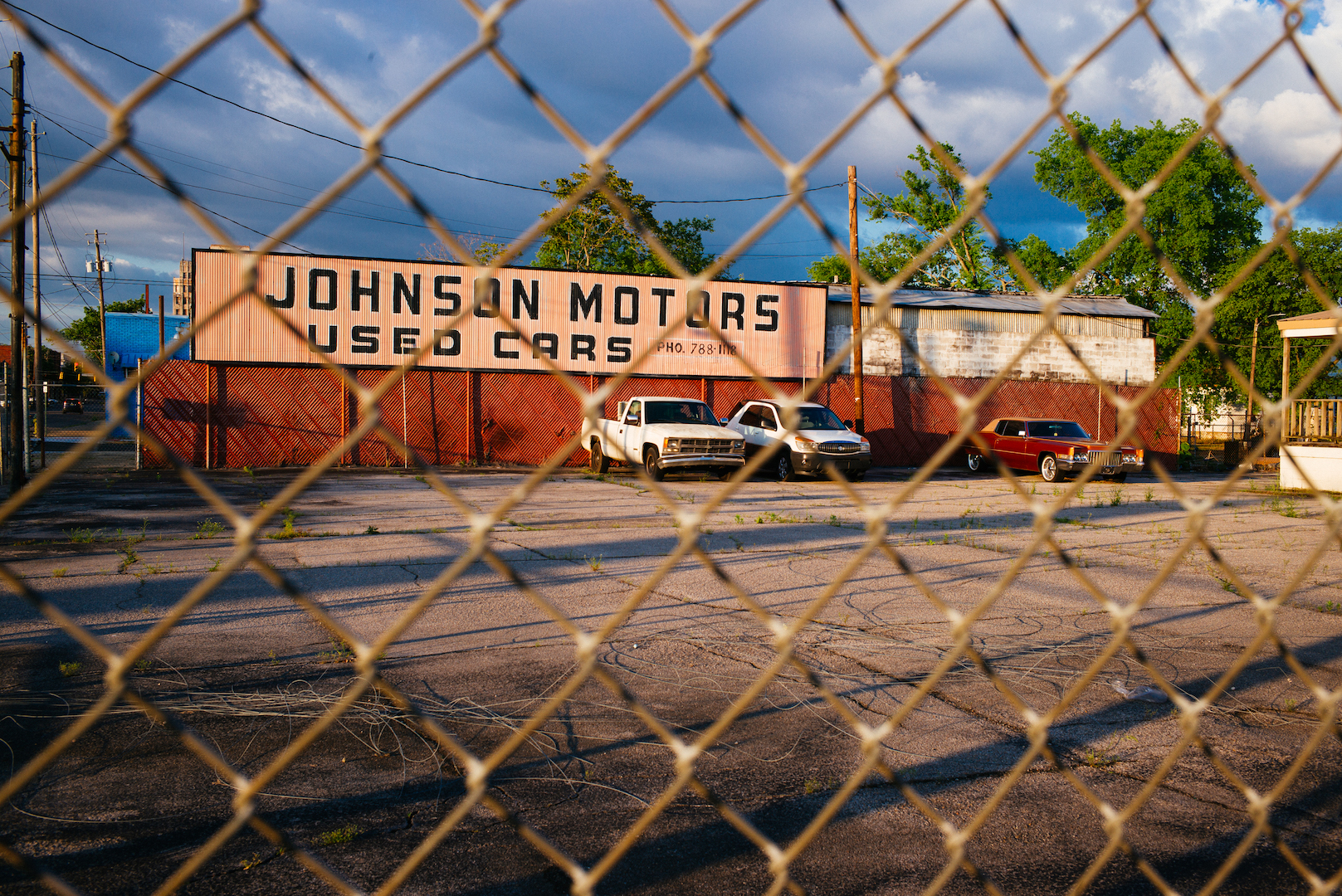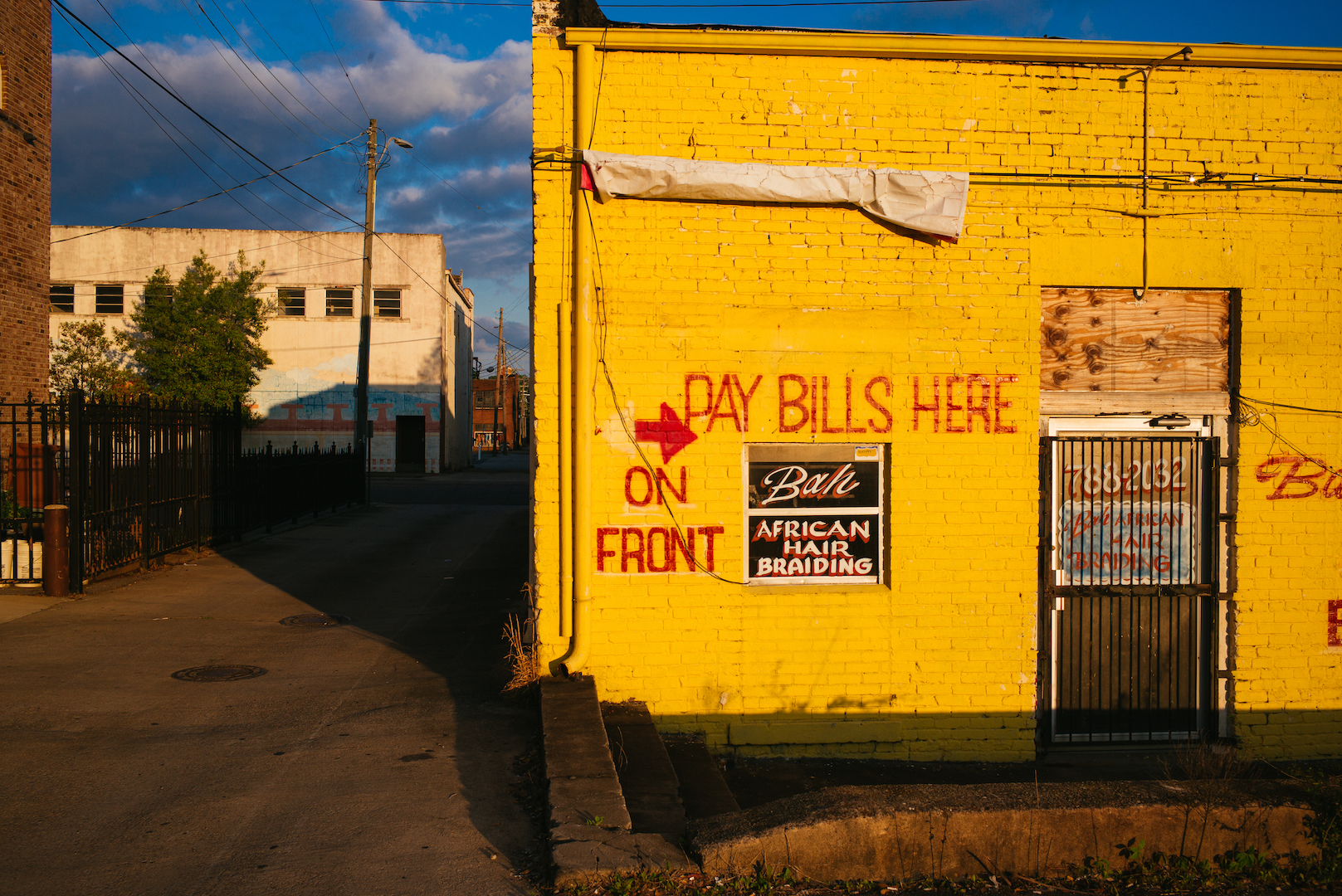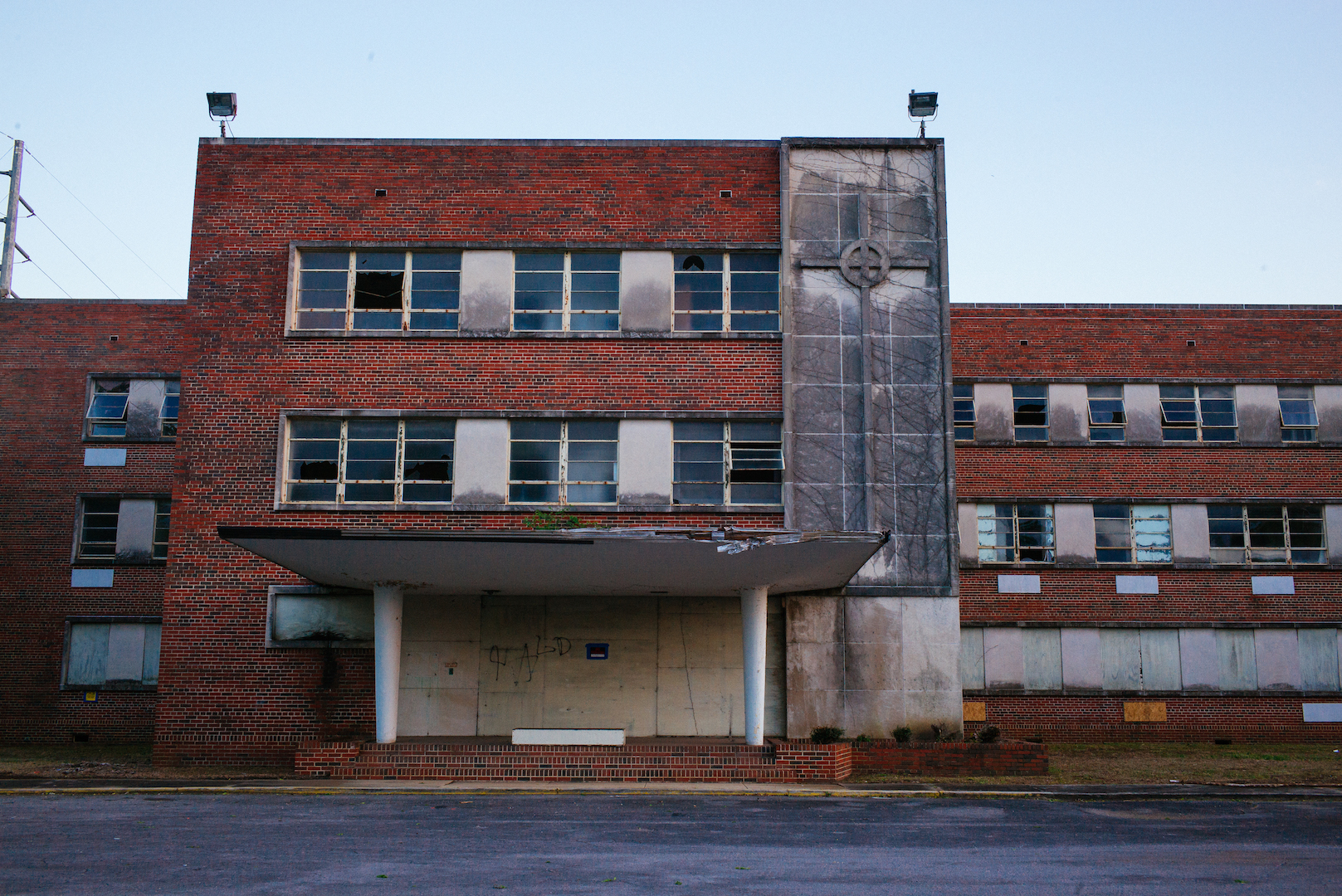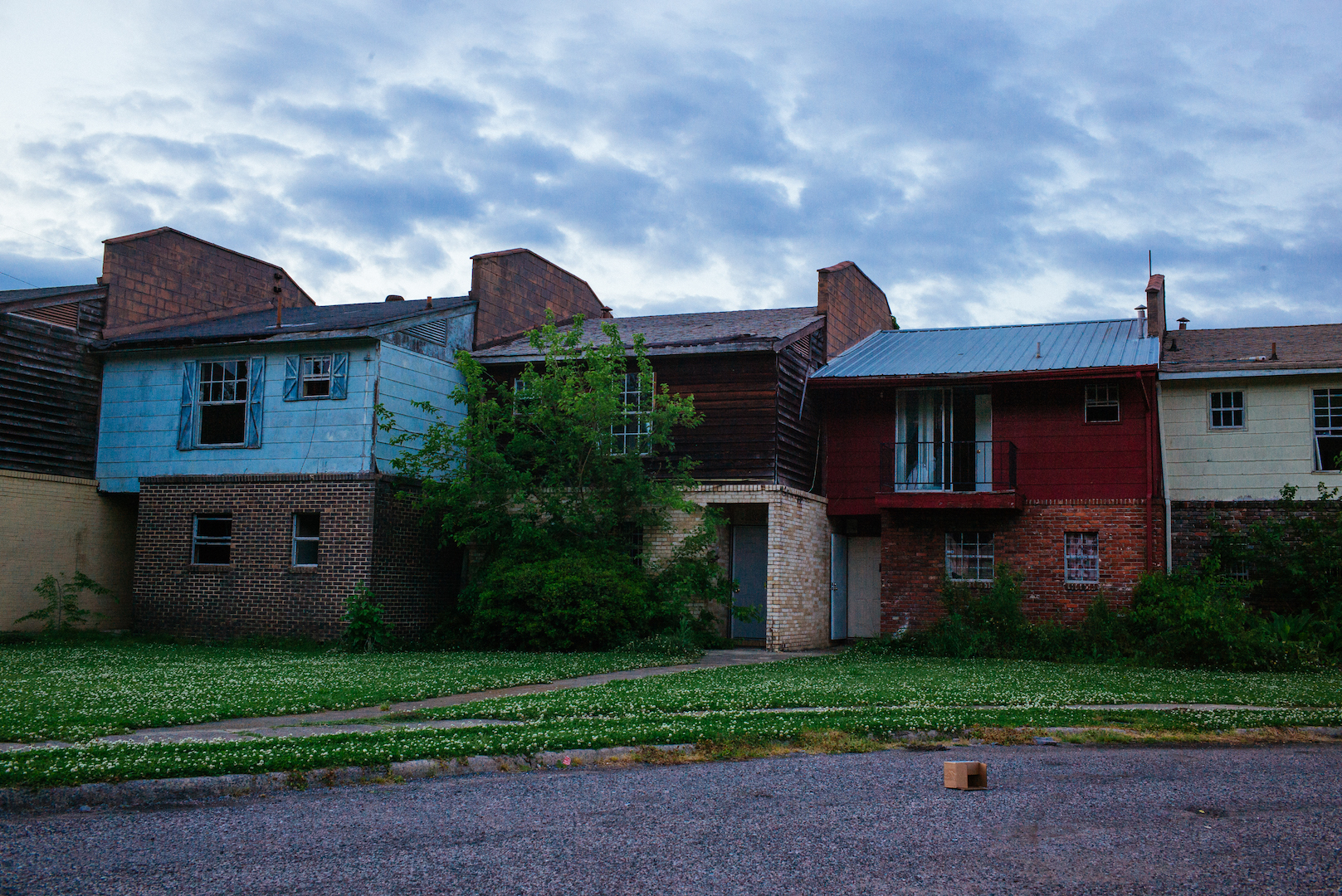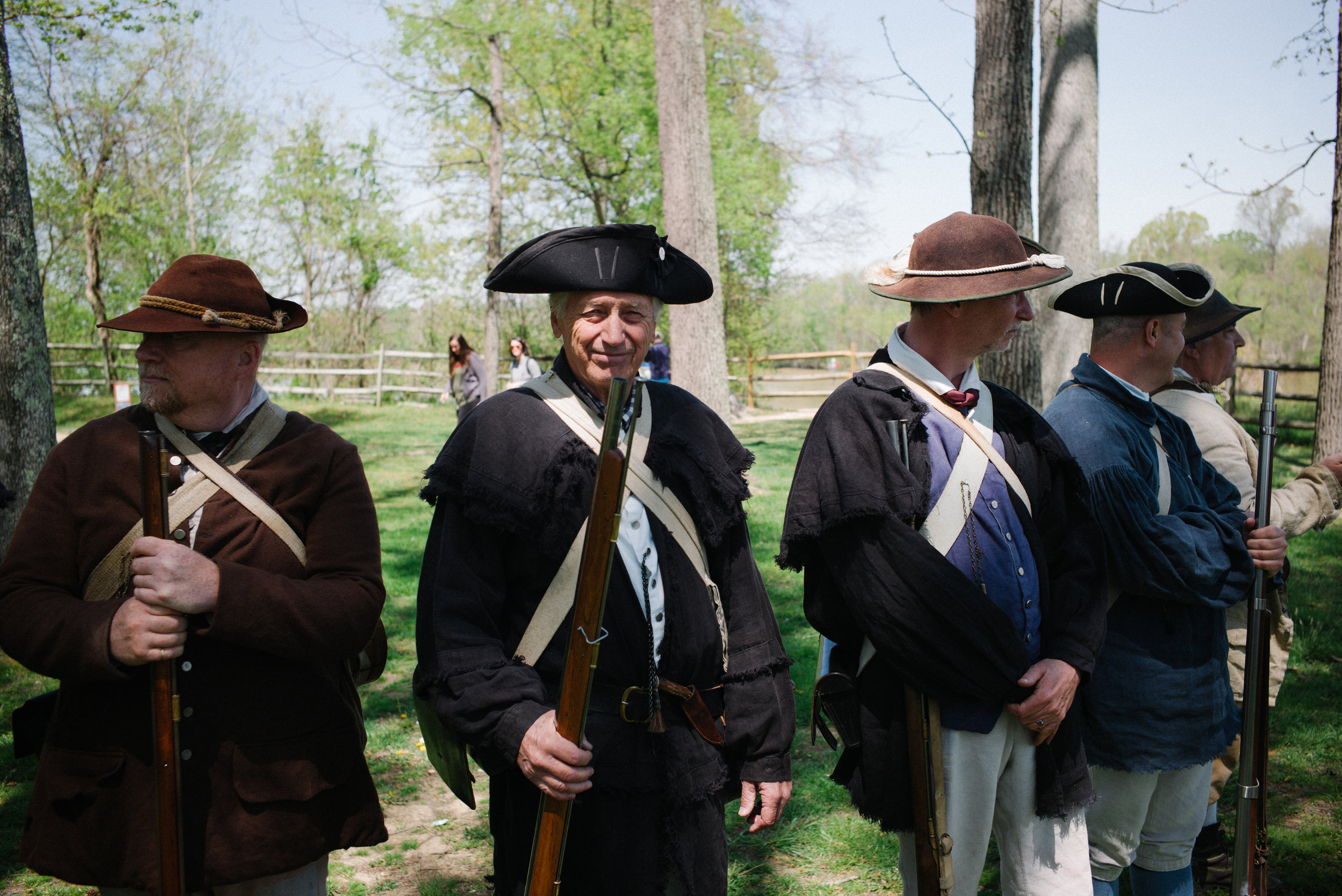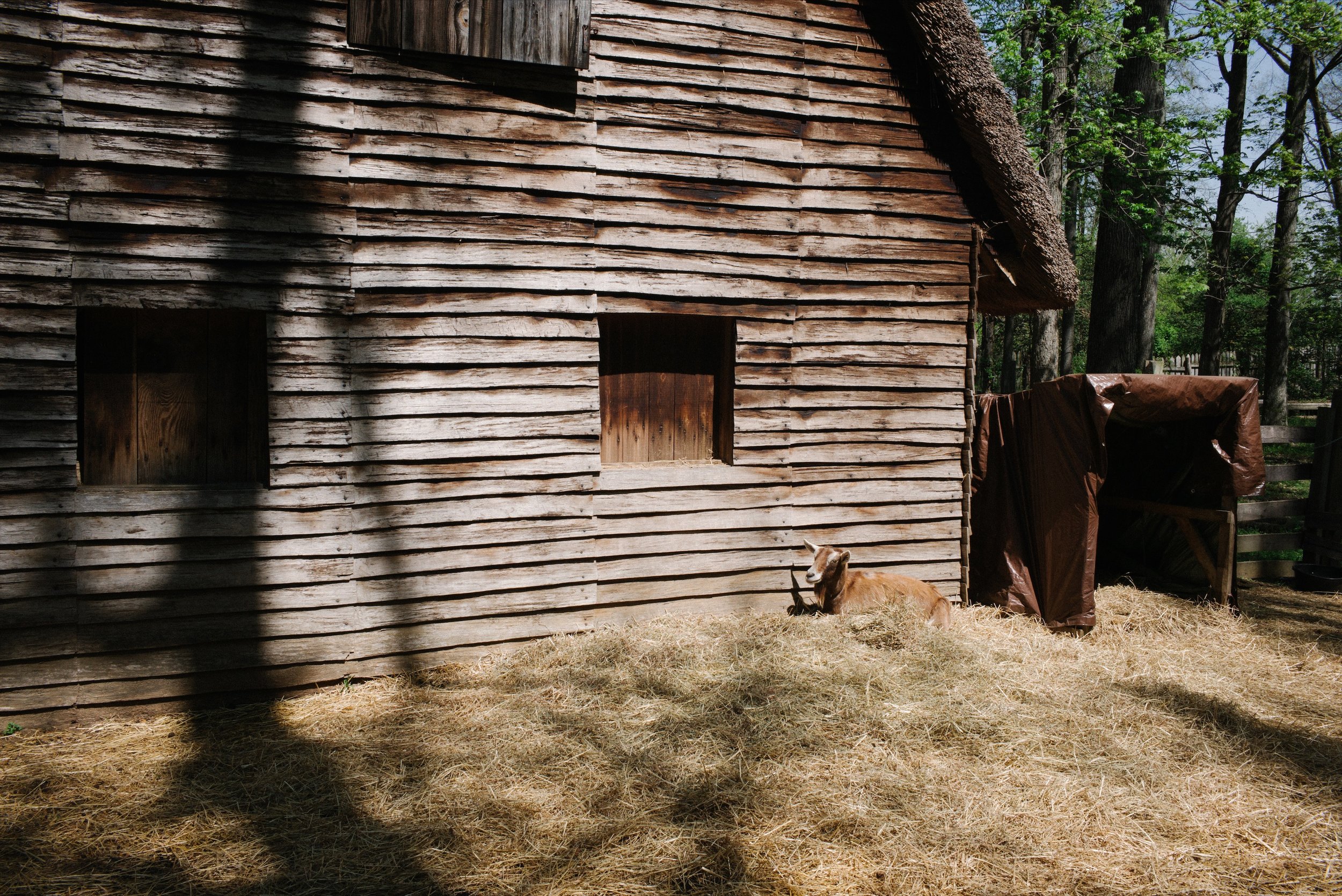new orleans, take one—cemeteries
Rather than try to walk you through each photo I took in New Orleans, I thought I would share them in batches organized by subject. Obviously, a trip to the city means time in cemeteries. But in our week visiting, we spent a lot of time visiting cemetries and I shot at least three rolls of film just documenting the huge variety of tombs and memorials we saw. These, obviously, are the photos I thought were worth sharing, culled from a variety of different cemetries in the area. Leave a comment if you recognize a particular one, or if you’d like to purchase a print of a particular photo. To see each photo in its glorious full size, just click on it.
